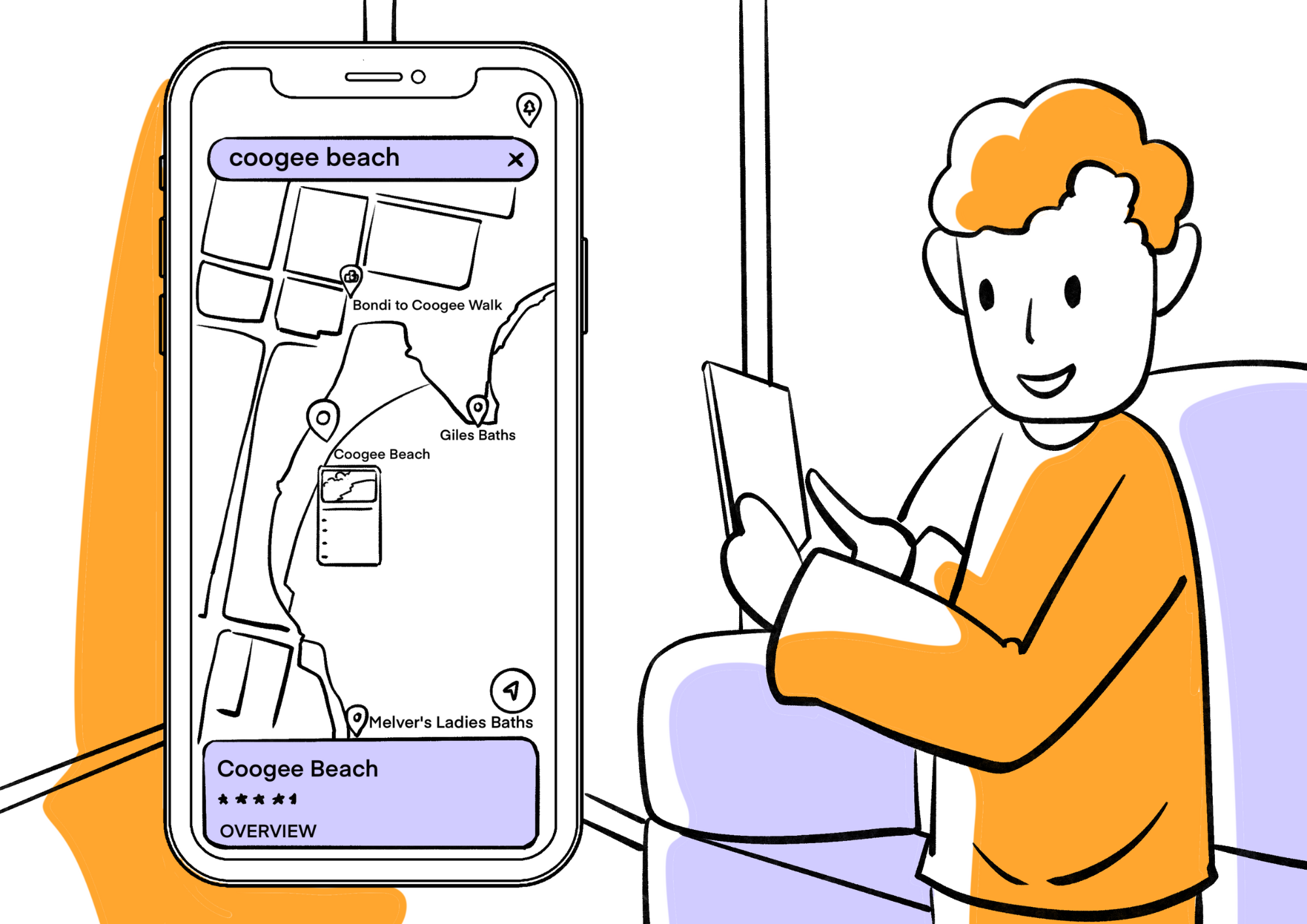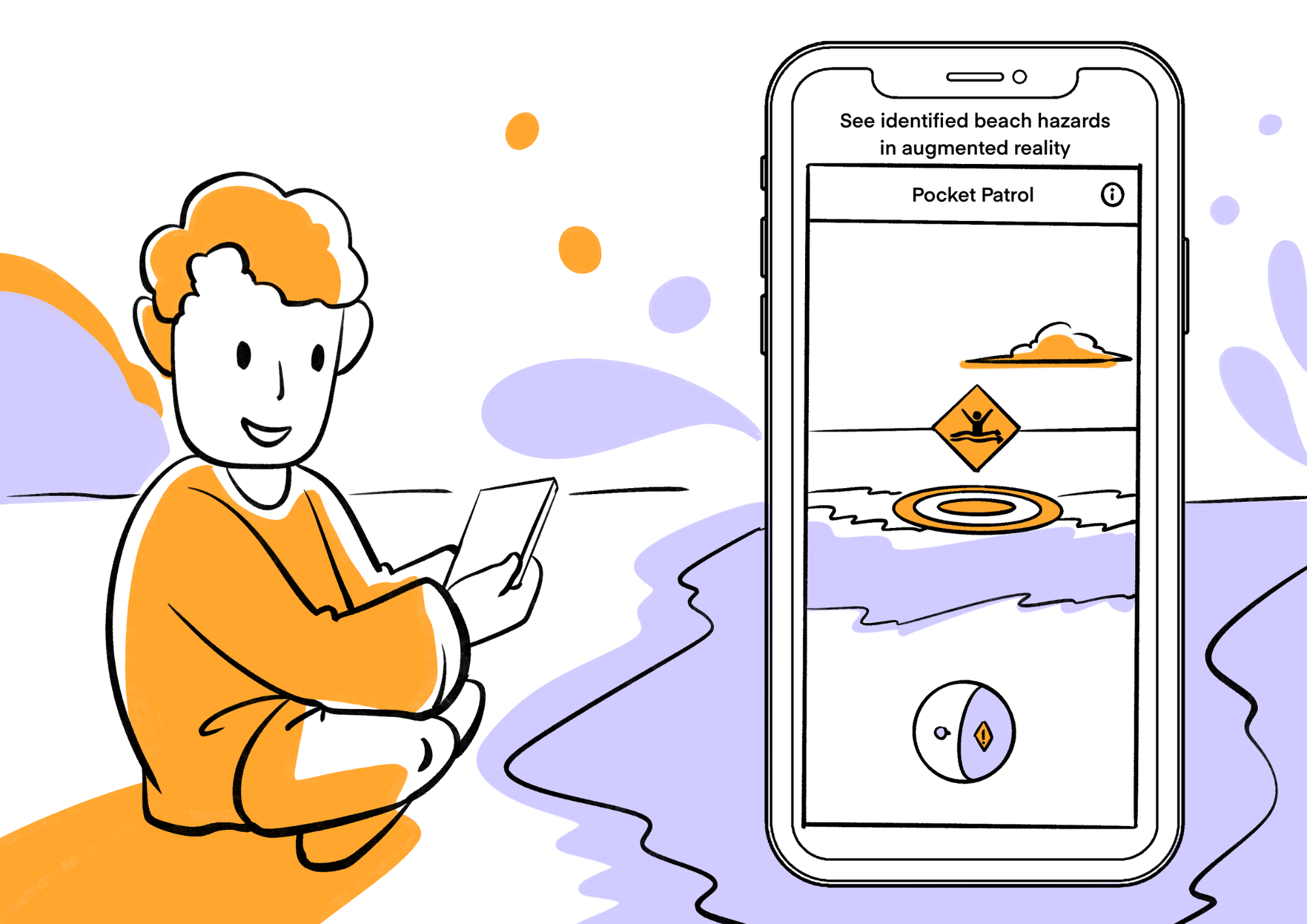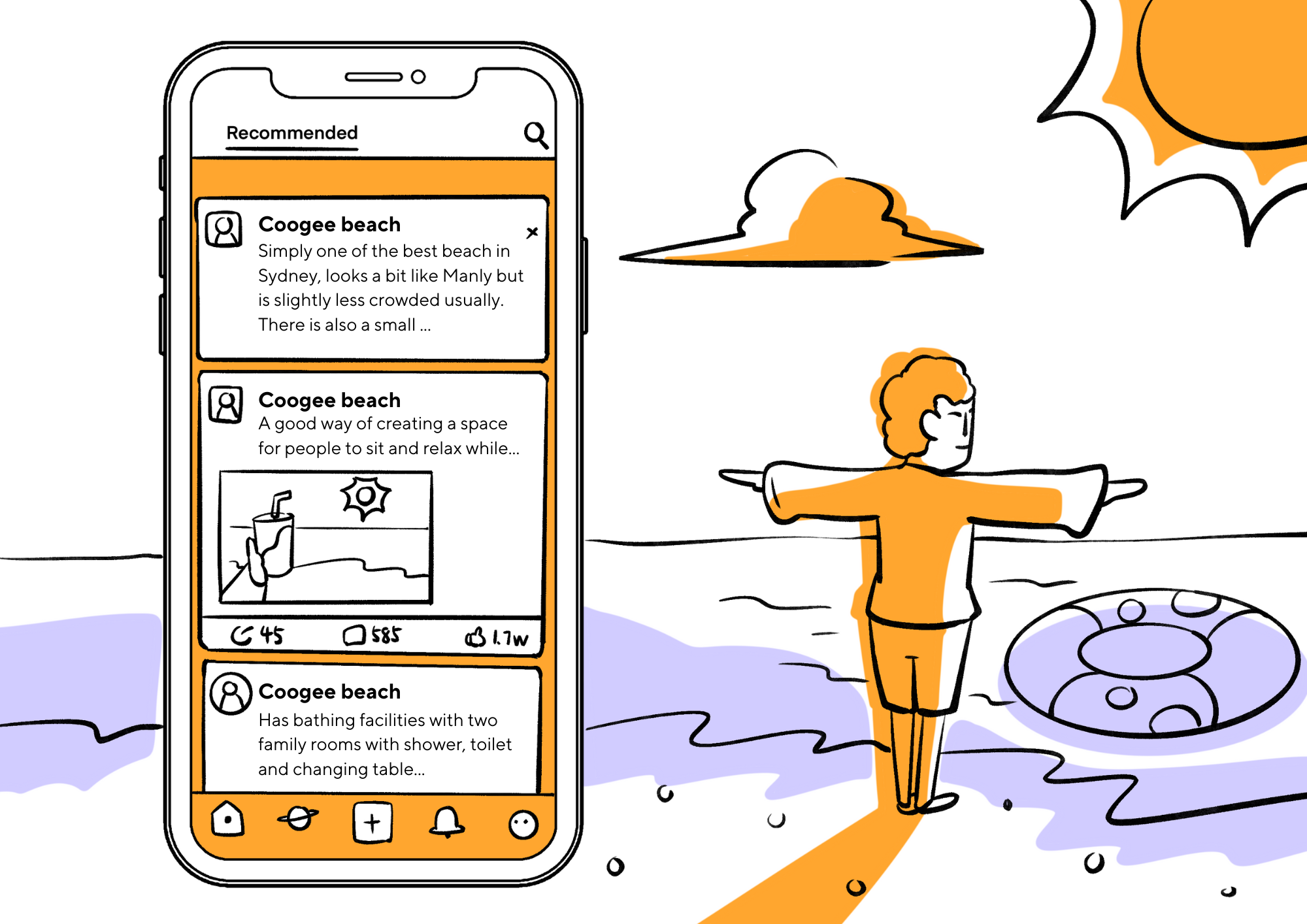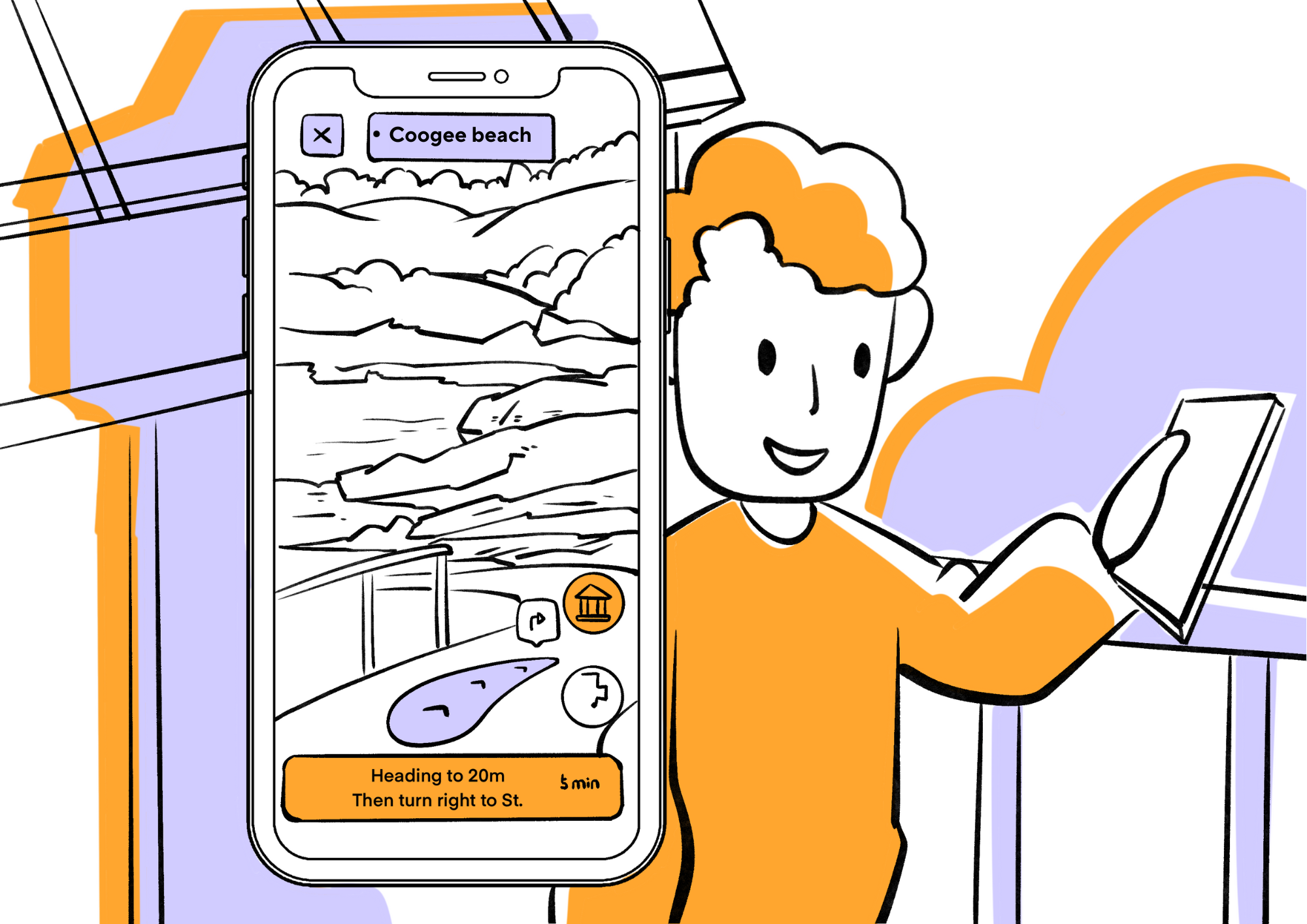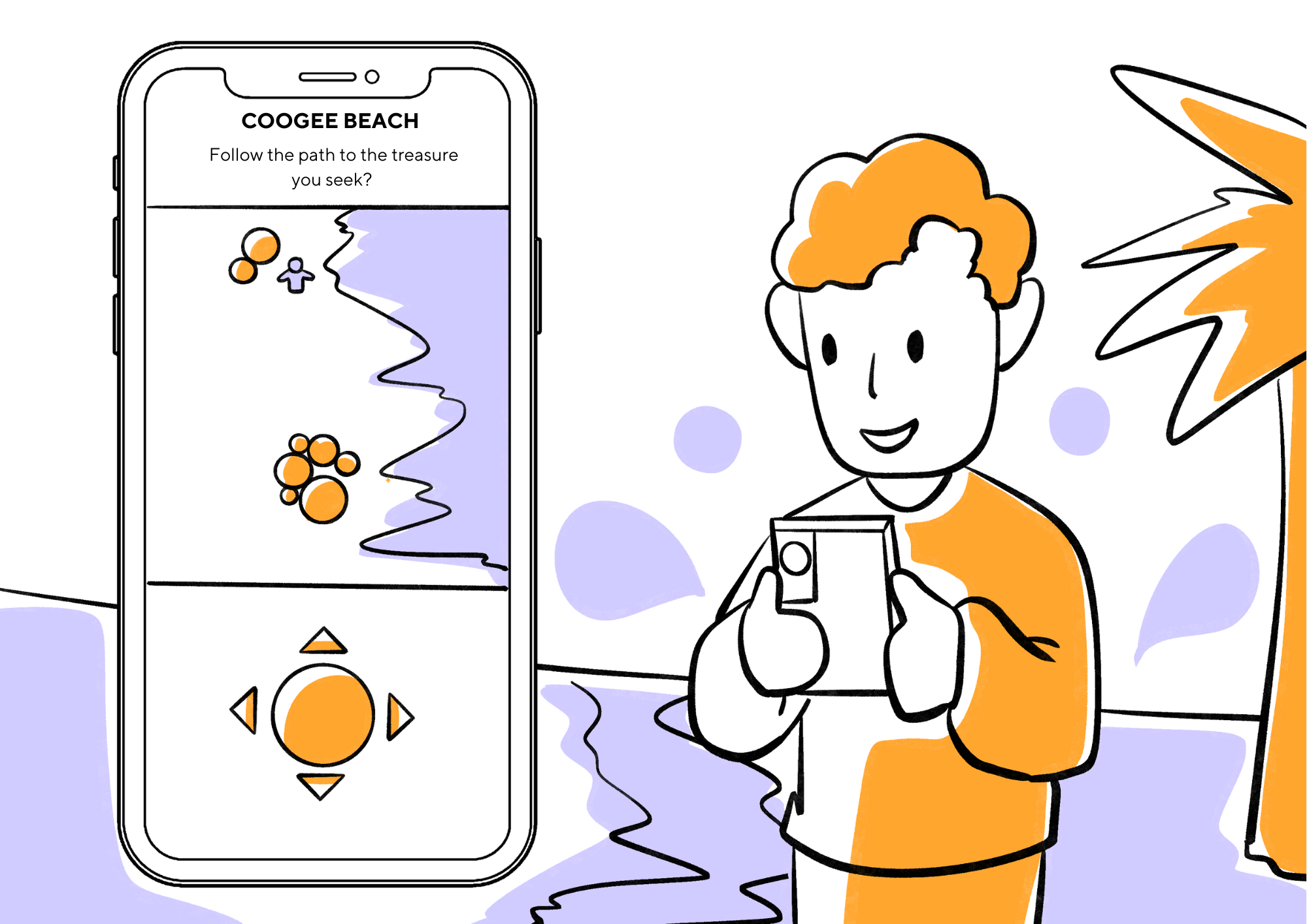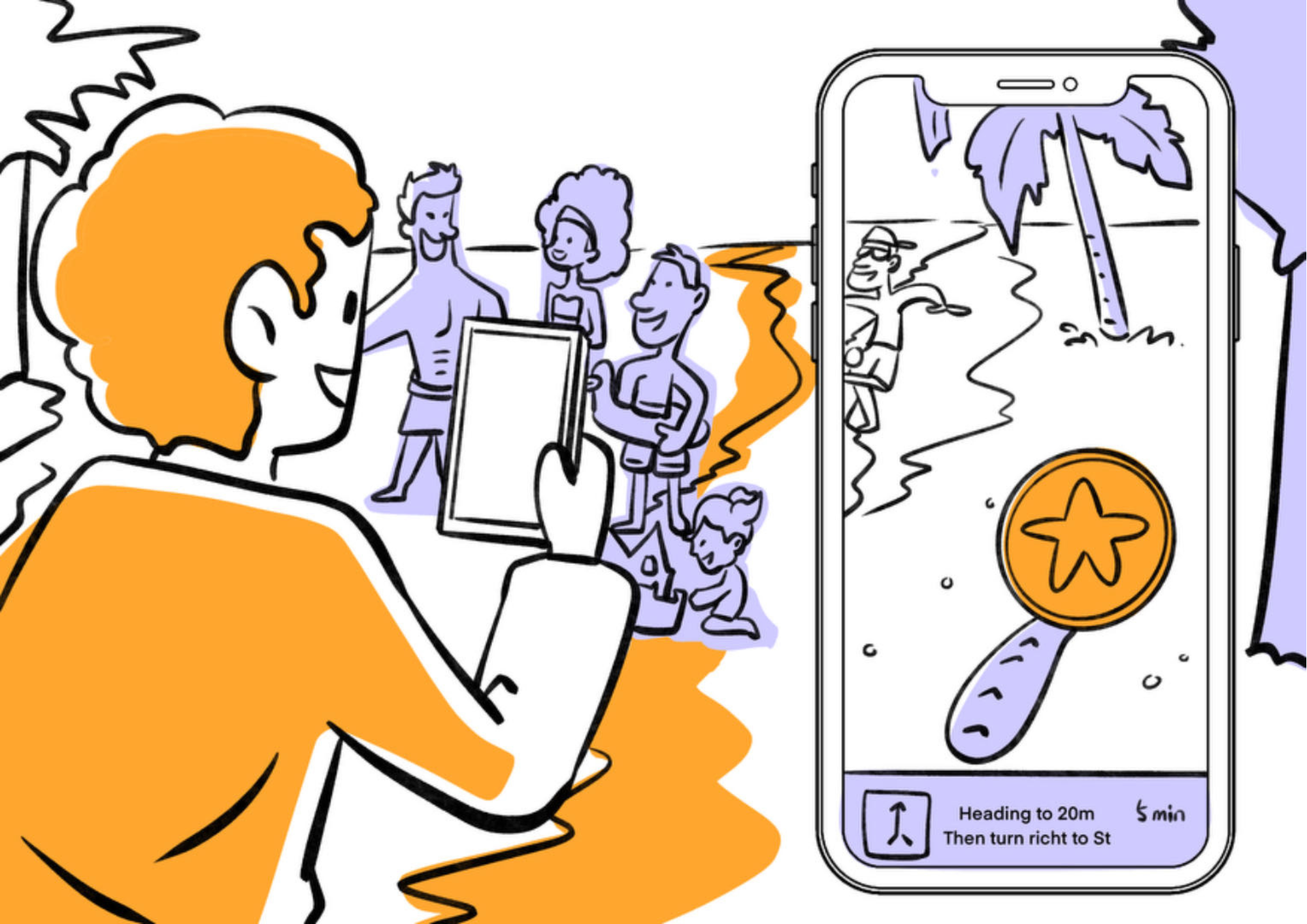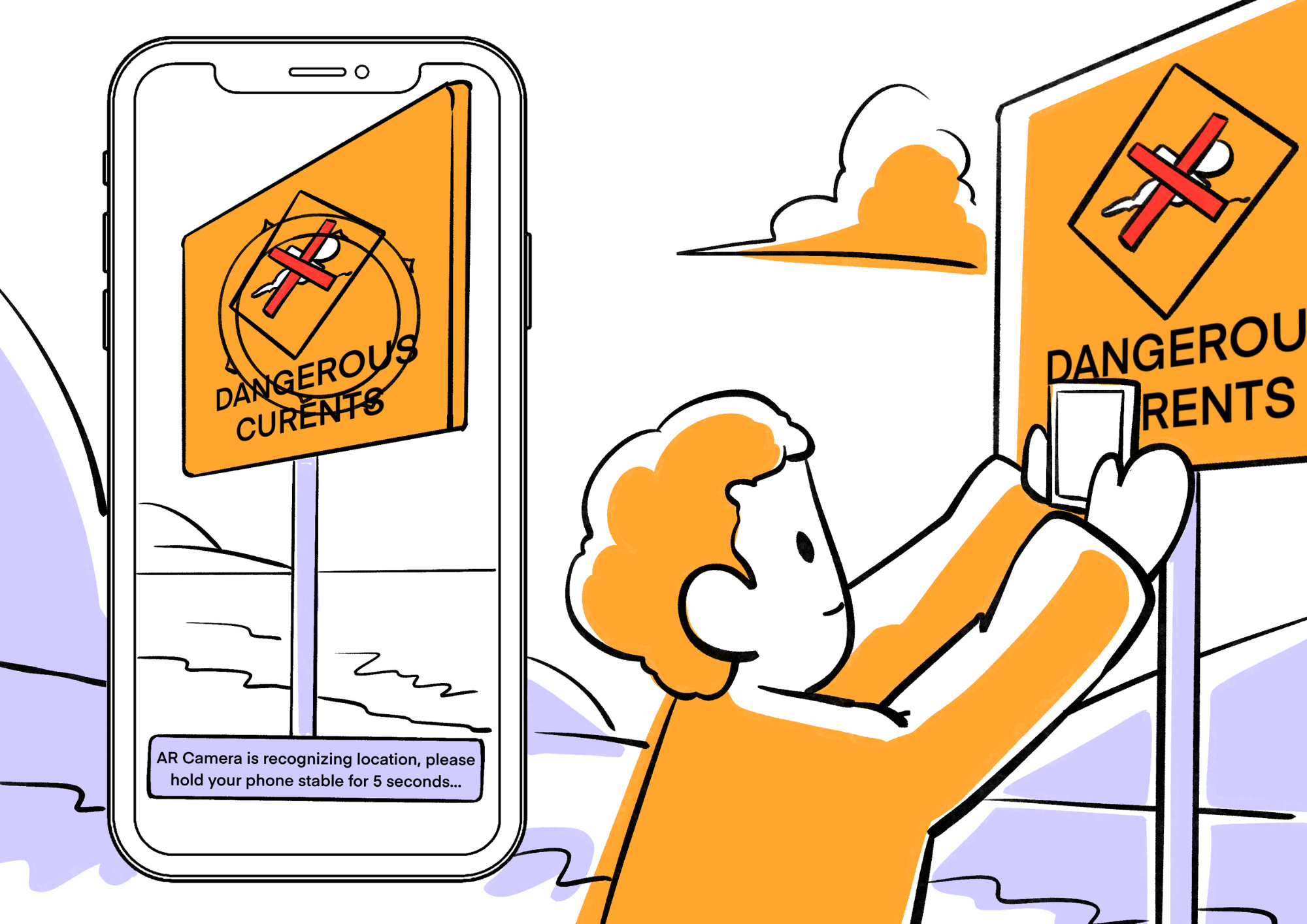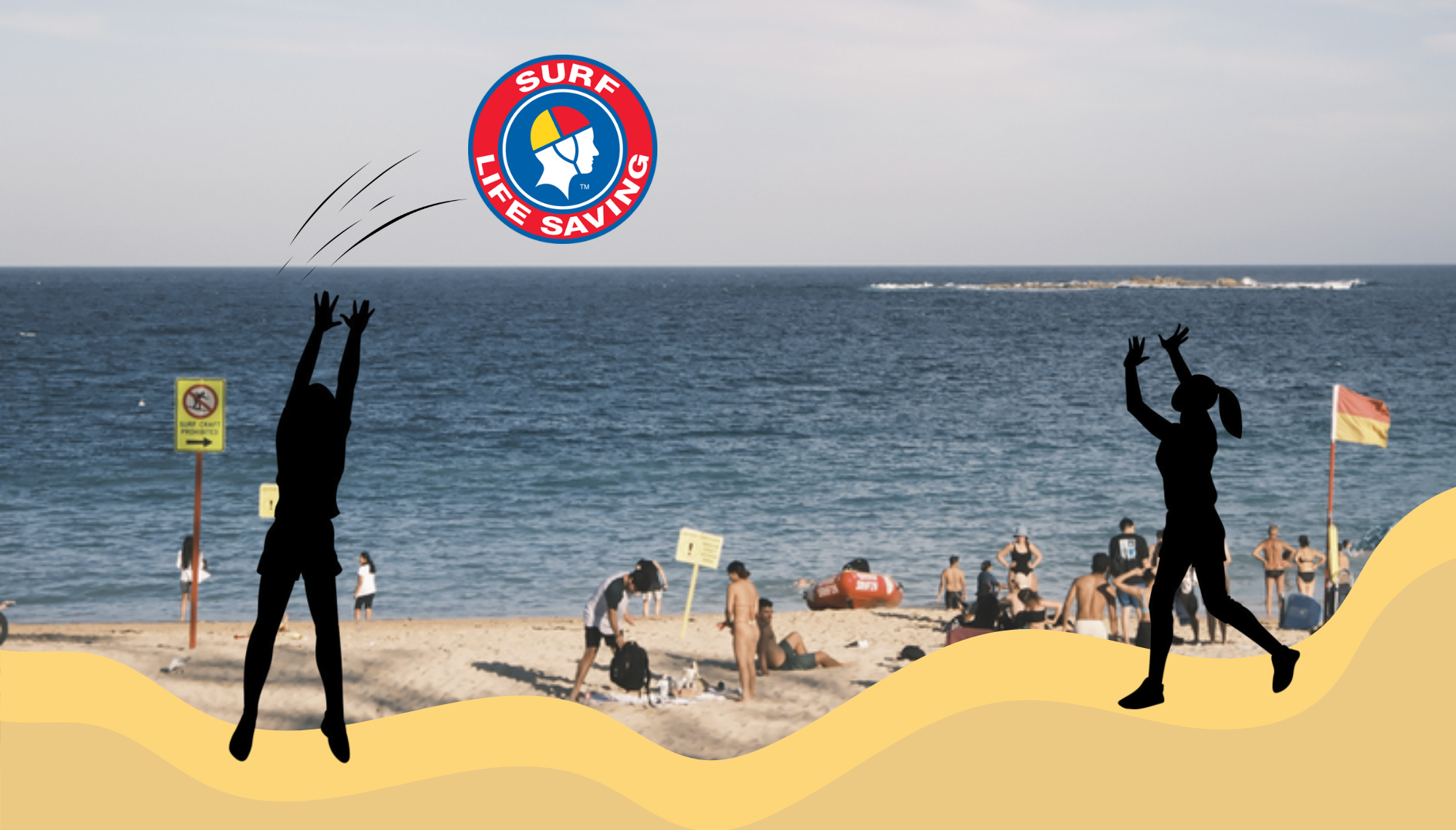
USER EXPERIENCE DESIGN
The Beach Camp - with Surf Life Saving
Unpatrolled locations present a major obstacle in water safety and efforts to prevent drownings. Over the period from 2013 to 2023, three-quarters of unintentional coastal drowning deaths occurred more than one kilometre from a Surf Life Saving service, predominantly at times or locations without lifeguard supervision. Despite the clear recommendation from organizations like Surf Life Saving Australia to swim at patrolled beaches during specified hours, practical challenges remain, particularly for people engaged in offshore activities or residing in regional and remote areas where access to lifeguard services is limited.
STATISTICS
In 2022/23, the drowning profile showed a widespread distribution across age groups, particularly affecting individuals aged 24-55 years, who comprised 68% of coastal drowning fatalities. Males constituted 80% of these deaths and were five times more susceptible to drowning compared to females.
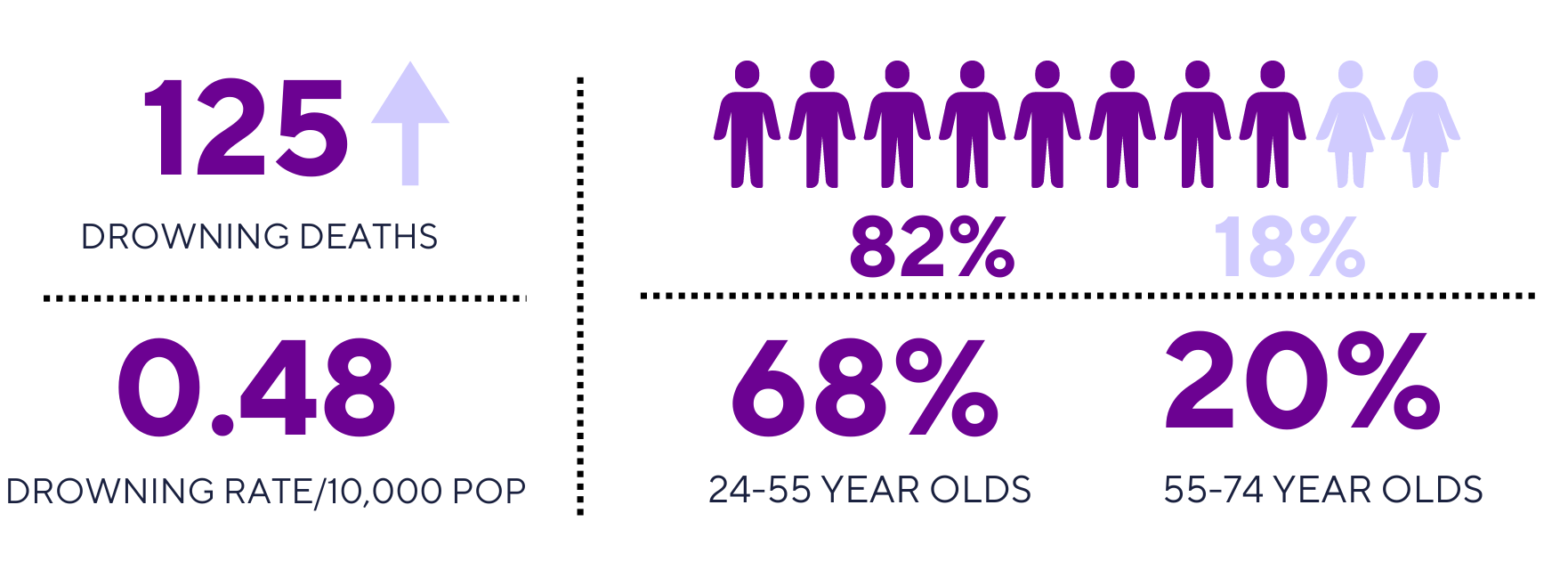
My Role
- User Flow Design
- User testing
- Storyboard Creation
- Graphical representation
- Evaluating Concepts (Model of Engagement + real life implications)
- Concept Developement
- Feasibility and Practicality
This project was the stand-out contribution out of the 30 submissions overall, and was nominated for the 2024 USYD ADP Graduate Showcase end of year Exhibition.
The Goal
prevent drowning deaths among beachgoers, the focus should shift towards modifying their beach behavior rather than solely educating them, emphasizing individual responsibility (by making people responsible for their own safety).
Defining the problem
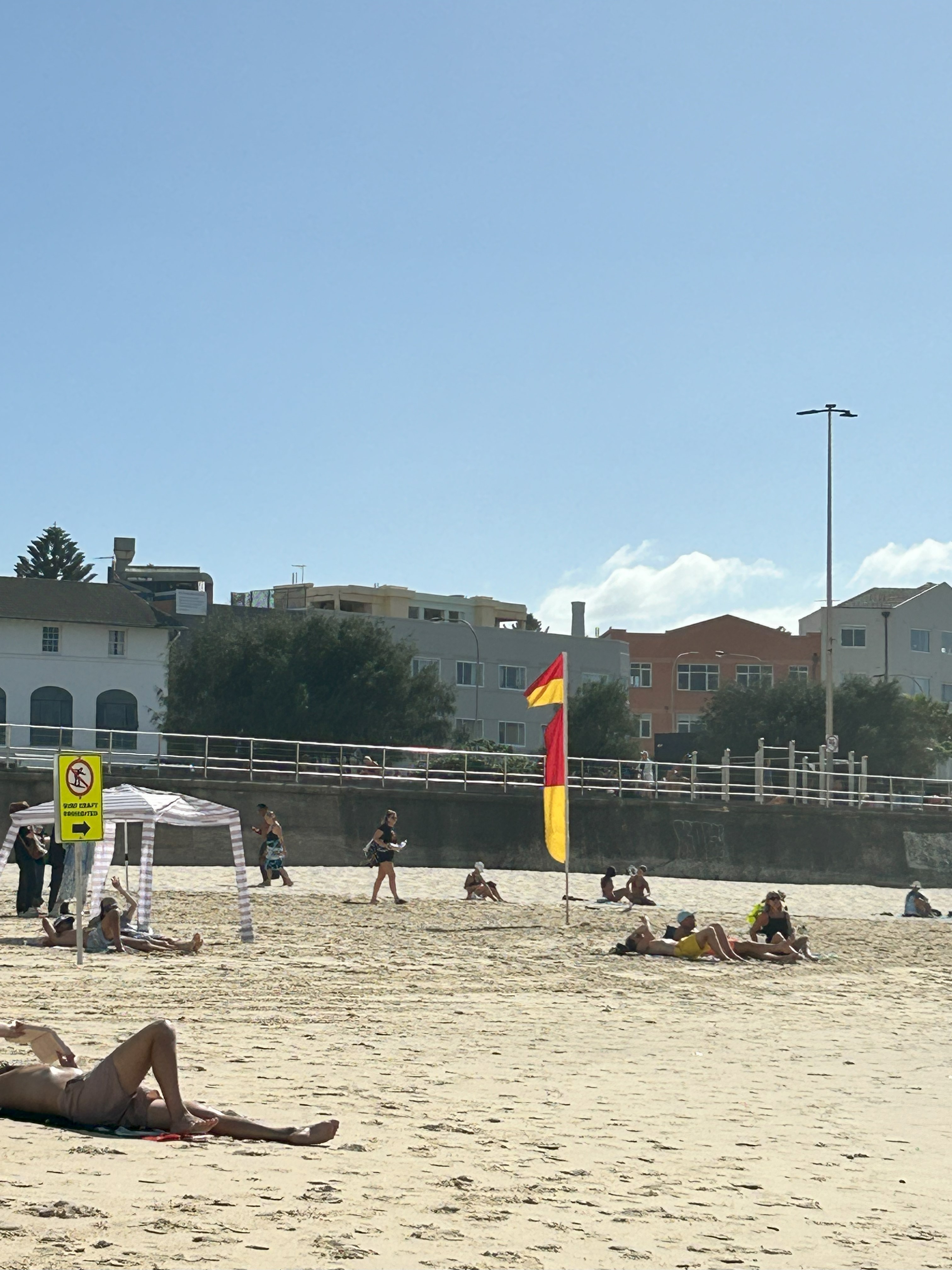


#1 PROBLEM : OVERCONFIDENCE
Currently people rely on their own judgement and believe their experiences have equipped them to be self sufficient in a crisis.
#1 PROBLEM : SAFETY INFORMATION
Beachgoers do not fully comprehend the current safety signages and information provided by SLA, often overlooking existing information.
#3 PROBLEM : EDUCATION
Beach safety education is well-implemented in local coastal areas, but tourists and new immigrants often lack awareness of these initiatives.
Reframing of the Brief
In response to the original brief, we aimed to develop innovative technological approaches to communicate risk and educate people. Our exploration of technologies and review of similar interventions revealed scepticism towards existing safety products, as devices alone cannot ensure safety.
Our research, including interviews and articles, highlights the human desire for adventure, leading individuals to explore unpatrolled or dangerous beaches. Previous campaigns to educate beachgoers have had limited success, as many believe they already possess sufficient beach safety knowledge, leading to overconfidence.
Framing the Solution
We focused on the theme of personal growth in our analysis and explored experiences that prioritize self-improvement. Drawing inspiration from the transformative environment of a Yoga retreat, we envisioned a new approach to our problem. This led us to establish design principles aimed at influencing individual behavior on the beach, integrating elements that help people use our intervension and help keep them safe.
PREVENTATIVE BEHAVIOUR
According to "Prospect Theory"(Kahneman & Tversky, 1977), individuals focus on avoiding losses under risk or uncertainty, making them more inclined toward preventative behavior. Preventing incidents is more beneficial than solving problems, which may have multiple causes. Our product aims to shift attention from risky activities to fun, safer alternatives without changing beachgoers' perceptions of their swimming abilities. Over time, this will create a positive association with the product, making its use a regular part of beach visits.
Designs Principles
We focused on the theme of personal growth in our analysis and explored experiences that prioritize self-improvement. Drawing inspiration from the transformative environment of a Yoga retreat, we envisioned a new approach to our problem. This led us to establish design principles aimed at influencing individual behavior on the beach, integrating elements that help people use our intervension and help keep them safe.

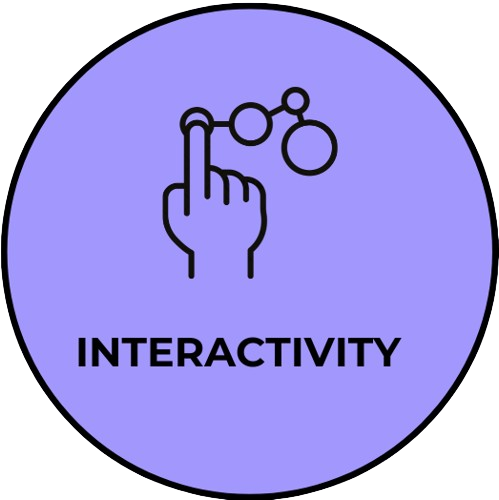
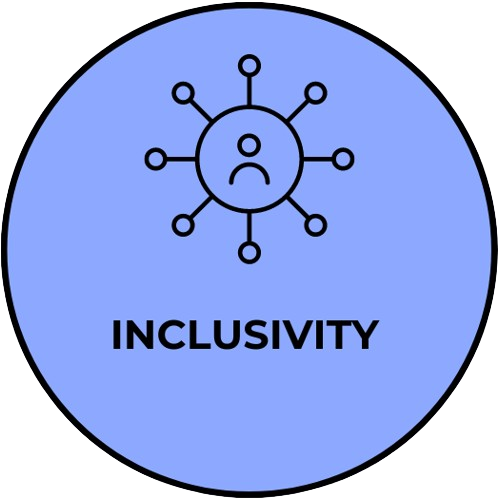


#1 USABILITY
Based on user feedback from a casual interview, frustrations with the complexity of the Beach Safe app have prompted us to prioritize usability in our design, aiming to simplify interactions and information presentation for all users.
#2 INTERACTIVITY
The principle focuses on engaging users through interactive, adventure-driven challenges that simulate real beach scenarios, making safety education dynamic and immersive.
#3 EDUCATIONAL IMPACT
This approach uses augmented reality (AR) and game-like features to make learning about beach safety fun and interactive. It includes real-time AR reminders and activities that help users learn how to stay safe and gain useful skills, making learning enjoyable and engaging.
#4 COMMUNITY ENGAGEMENT
Our idea improves community involvement to tackle isolated beach visits, especially at unguarded beaches. It offers a platform for users to share experiences, safety advice, and plan visits together, using community support to boost safety for everyone involved.
#5 INCLUSIVITY
The rebrief highlights diverse user demographics, requiring features that are easy to use and valuable to all users, regardless of their technical skills or beach knowledge. This approach aims to ensure the app benefits the entire beach community equally.
What is Beach Camp?
"Beach Camp" directly addresses the main challenge outlined in the brief: the alarming rates of accidents at unpatrolled beaches due to a lack of awareness and engagement with safety measures. By leveraging widely used platforms like Google Maps for easy access and visibility , and integrating engaging AR features and community forums, Beach Camp transforms beach safety education from a passive to an active and enjoyable experience. This approach raises awareness about beach hazards also fosters a proactive beachgoing community that values and practices safety, effectively reducing the risks associated with unpatrolled beaches.

Integration with Google Maps: Beach Camp integrates with Google Maps, allowing users to access detailed beach safety features through the SLA app when searching for beaches.
Upon entering Beach Camp via Google Maps, users see an interactive map showing patrolled and unpatrolled beaches.

User Journey and Incentivization: AR features gamify safety education through scavenger hunts for guide coins and virtual safety cards, which can be redeemed for rewards like beach essentials, promoting ongoing engagement with safety features.

Community Engagement and AR Gaming: The app includes social forums for each beach, enabling users to connect, share updates, and form groups as well as get important information for each specific beach.
This gamified approach fosters a safety culture in the beach community and promotes ongoing app use by allowing points to be redeemed for prizes. The app attempts to prevent drowning by diverting users to the safe zones (patrolled areas).
Application Prototype
This prototype showcases the culmination of extensive research, user feedback, and iterative design processes aimed at creating an interactive experience using Figma. The prototype illustrates our approach to integrating augmented reality (AR) and with real-time safety information and encourage responsible beach behaviorby users.
StoryBoard
This storyboard follows Alex, who discovers Beach Camp through Google Maps. It captures his journey from finding the app to using its features, such as real-time safety updates, AR-guided safe zones, and community engagement tools. Alex's experiences illustrate how Beach Camp enhances beach safety and fosters a connected community of beachgoers.
Conceptual Video
This video provides a basic look at the game's core features and mechanics, illustrating its reward collection system and its interactive experiences. It demonstrates our approach to provide an exciting option that subtly leads people away from danger(Unpatrolled beaches) and the redeeming option that is available.
Journey Map
The journey map for Beach Camp outlines our 10-week development process, detailing key learnings and milestones each week. It illustrates our iterative approach, from concept exploration and demographic research to prototype development and implementation. This map highlights how we integrated feedback, overcame challenges, and applied design principles to create an engaging solution for beach safety and community engagement.

What do we hope to acheive in the future?
Guidance from Google Maps: To enhance the transition to the SLA app, consider implementing clearer prompts or incentives. For example, offering exclusive safety tips or rewards upon app installation could motivate users to make the transition.
Community Integration Since the forum module is effective, continue to promote and encourage community interaction. Consider adding features such as live chat sessions with lifeguards or regular safety webinars to further foster connections and safety through companionship.
AR Adventure Game: To address accessibility issues such as eye fatigue and adaptation challenges for older users, provide options for users to toggle between AR and non-AR modes. Implement voice-guided instructions or text-based cues for those who prefer not to use AR. Ensure that the game environment is customizable in brightness and contrast to reduce eye strain.
Gamification and Rewards: Diversify rewards to appeal to a broader audience. Consider offering physical rewards like beach gear, as well as virtual rewards such as exclusive badges or titles. Ensure that rewards are attainable through various activities, not just through the AR game.
Competition and Incentives: To maintain long-term engagement, introduce a variety of challenges that cater to different interests and skill levels. Consider seasonal challenges tied to beach safety events or themed challenges related to environmental awareness.
By implementing these improvements, Beach Camp will evolve into a more inclusive, engaging, and effective platform for promoting beach safety and community engagement. It could also become a part of the beach going ritual and provide entertainment for individual beach goers.
REFLECTION
I have always loved Australian beaches and often sought out unpatrolled, hidden ones to avoid the crowds. As I delved into the research and interacted with our client, Surf Life Saving, the dangers I faced every time I visited these unmarked beaches became very apparent.
The brief from our client emphasized the necessity of using technology to communicate the risks of unpatrolled beaches, prompting us to begin working toward this goal.
As we advanced in our design process and research, I started investigating why many educational campaigns fail. We opted for a different approach: using distraction as a prevention method, which intrigued me and prompted further exploration.
The concept of employing ego and distraction through a specific item of interest has fascinated me. Implementing this through an AR game seemed like a step closer to the digital revolution we live in, and I believe it would be more easily assimilated into people's routines than an educational pamphlet.

Our Display
In the 13th week of the semester, we developed an artifact for Surf Life Saving (SLS) and peers to view our Beach Camp intervention and experience its intended functionality.

Review Wall
We received valuable feedback on how to improve our Beach Camp prototype and identified key areas that should receive more attention, as they are critical to attracting users due to their functionality.

The Artefact
We included a storyboard, a hard copy of all screens developed on Figma for easy interaction, and a video showcasing the Unity component of our Beach Camp project. This provided our audience with the best possible experience of our intervention.

Our Group
Our group included three interface designer who focused on applying the concepts practically and one innovation designer who managed the project's workflow and timelines using Gantt charts, providing clear task definitions and schedules.

